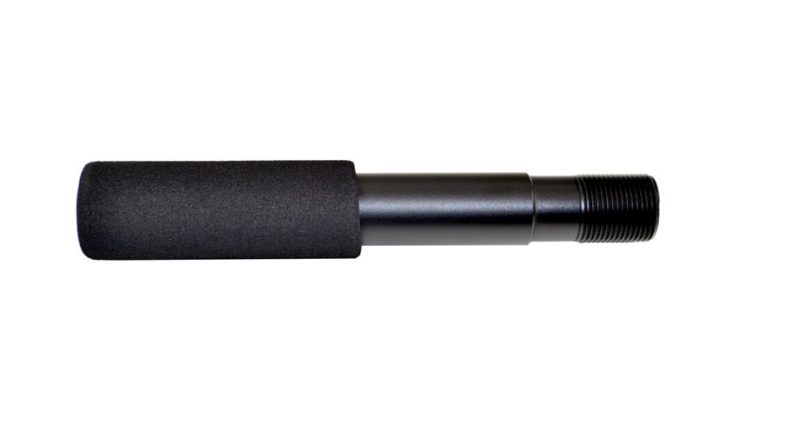Buffer Tube Kits: Adjusting Buffer Weight to Improve Performance
A rifle like an AR-15 with a gas impingement system has a lot of moving parts that can be configured to custom-tailor performance. Consider gas blocks, BCGs, and trigger groups.
Another is the buffer system, which consists of a tube, spring, and weights. This is one of the least-understood components of a rifle.
This is due in part to the fact that the buffer system is hidden within the rifle’s stock, and in part (mostly) to the fact that some shooters don’t even know what it is in the first place.
Nonetheless, it is vital to handling, cycling, and felt recoil, and by adjusting the buffer tube weights, you can produce a marked impact on recoil and cycling speed.
What Does the Buffer Tube Do?
The buffer tube contains buffer weights and a type of recoil spring known as a buffer spring. When you fire the rifle, pressure generated from the gas in the gas system forces the BCG rearward.
The buffer weights help to absorb some of this force, while the rearward progress of the BCG and buffer tube weights compress the buffer spring.
The buffer spring stores potential energy and redirects it into the BCG once the cycle has moved fully rearward, forcing the BCG forward, chambering another round, and resetting the action.
Together, the weights and springs help to add reciprocating mass, absorb recoil, and store energy to reset the action.
Adjusting the weights can make a marked difference here.
Heavier Weight: Greater Reciprocating Mass, Lower Felt Recoil
Many rifles are “over-gassed” which means that too much pressure is used in the cycling of the action. This is a common problem that can be easily fixed if a rifle has an adjustable gas block.
If it doesn’t, you have limited options, but one of them is adding a slightly heavier set of buffer weights, which will help absorb some of this force.
Adding weights is also a solution if the cycling of the rifle feels too rapid, violent, or “snappy.” The extra mass will mediate the rearward force exerted by the BCG.
Adding buffer weight is also a quick way to absorb felt recoil. Generally speaking, you should use as much buffer tube mass as is reasonable without making it difficult for the rifle to cycle. This will ensure smooth, fluid cycling and reduce felt recoil.
Lower Weight: Lower Reciprocating Mass, Quicker Cycling
Conversely, if a rifle’s cycling is sluggish, stovepipe jams are common, or the rifle just won’t cycle properly, you might want to think about lowering the buffer weight.
In all likelihood, the problem here is probably caused by an issue with the gas system, but it remains conceivable that the problem has either originated with the buffer tube weight – or, at least, that it can be fixed with an adjustment.
Slightly stepping down your buffer weight can make your rifle’s action cycle more rapidly in a crisper, snappier motion. Felt recoil will increase (since you’ll be lightening the overall reciprocating mass of the gun) but it will also ensure shorter action times.
Moreover, lowering buffer weight can also solve problems associated with extraction and ejection (just be sure to check the gas system, extractors and ejectors first).
Where Can You Get Buffer Tube Kits?
Interested in learning more about buffer tube kits and how the system can be adjusted to improve the performance of your rifle?
Get in touch with MCS Gearup online at MCSGearup.com. They carry a wide range of AR-15 parts and accessories, including but not limited to BCGs, upper and lower components, and buffer tube kits.
You can also reach their customer service by phone or email at 239-848-6757 or at Sales@MCSGearup.com.
For more information about skeletonized ar 15 and Caa Mck Please visit: MCS Gearup.



